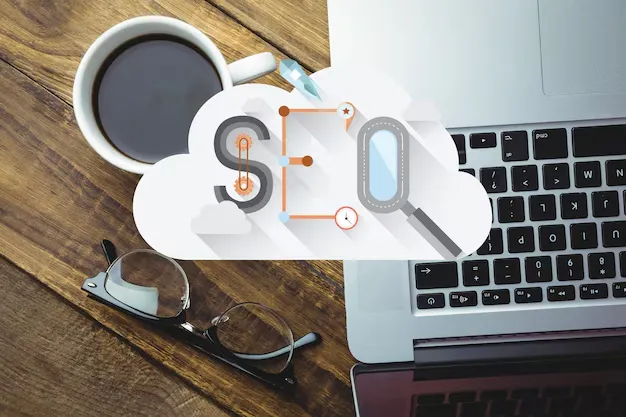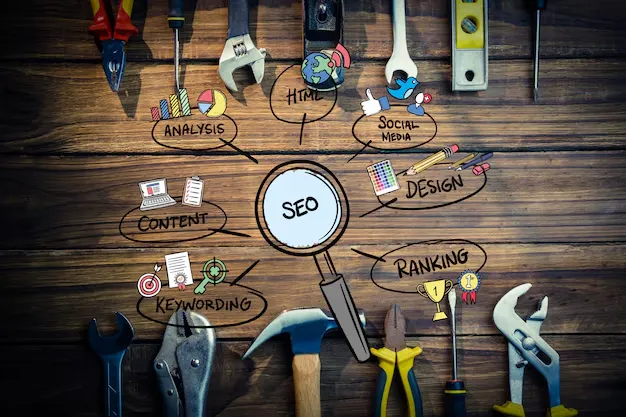Introduction to SEO
In today’s digital world, having a strong online presence is essential for success. Search Engine Optimization (SEO) is the cornerstone of this presence, ensuring that your website is visible to the right audience when they search online. Without effective SEO strategies, even the most beautifully designed website can remain invisible to potential customers. But SEO isn’t just about optimizing content for search engines—it’s about creating a seamless experience for users, building authority, and gaining trust.
What is SEO and Why is it Important?
SEO is the process of improving a website’s visibility on search engine results pages (SERPs). When done correctly, it helps websites rank higher in search engine results, driving organic traffic. This is crucial because higher rankings correlate with higher traffic and, ultimately, greater opportunities for conversions.
In simpler terms, SEO makes your site easier for search engines like Google to understand, which means they can deliver your content to the right people when they search for relevant topics. The more optimized your website, the more likely you are to attract valuable organic traffic.
The Three Pillars of SEO: On-Page, Off-Page, and Technical SEO
Effective SEO is built on three core pillars:
- On-Page SEO: This involves optimizing the content and structure of your website to make it more search engine-friendly. It includes aspects like titles, headings, URLs, and content quality.
- Off-Page SEO: This focuses on actions taken outside your website to improve its authority and ranking, such as gaining backlinks, social media mentions, and influencer outreach.
- Technical SEO: This focuses on optimizing the backend aspects of your website, such as site speed, mobile-friendliness, XML sitemaps, and overall website architecture.
Together, these three pillars create a robust SEO strategy that can propel your website to the top of the search engine rankings.
The Role of Search Engines (Google, Bing) and How They Rank Sites
Search engines like Google use algorithms to assess and rank websites based on a variety of factors. Google, in particular, uses over 200 ranking signals, including content quality, backlinks, mobile optimization, and user experience, to determine where a site should appear in search results. By understanding and optimizing for these factors, you can increase your chances of ranking higher in relevant search queries.

On-Page SEO Optimization
On-page SEO is the foundation of any successful SEO strategy. It ensures that your content is not only engaging for users but also optimized for search engines. Let’s dive into the key aspects of on-page SEO.
How to Optimize Titles and Meta Descriptions
Your title tag is one of the most important SEO elements. It’s the first thing users see in search results and directly impacts click-through rates (CTR). Craft compelling titles that include primary keywords and accurately reflect the content on the page.
Meta descriptions, while not a direct ranking factor, still play a key role in encouraging users to click on your link. Write a concise, engaging meta description (around 150–160 characters) that summarizes the page content and includes relevant keywords.
Importance of Header Tags (H1, H2, etc.)
Header tags (H1, H2, H3, etc.) structure the content on your page and help search engines understand the hierarchy of information. The H1 tag should always contain your primary keyword and represent the page’s main topic. Subsequent headers (H2, H3, etc.) can be used to organize content logically and include secondary keywords.
SEO-Friendly URL Structure
A clean and SEO-friendly URL is critical for both search engines and users. Short URLs that include your target keyword are easier for search engines to crawl and for users to remember. Avoid long, complex URLs with unnecessary parameters or numbers.
Image Optimization (ALT Tags, File Names)
Images should not only enhance the user experience but also contribute to your SEO strategy. Ensure that your image file names are descriptive and relevant to the content. ALT tags (alternative text) help search engines understand what an image is about, improving accessibility and SEO.
Internal Linking Strategy
Internal links help search engines understand the structure of your site and establish relationships between different pages. They also improve user navigation. Link to relevant, high-quality content within your site, and ensure your most important pages are easily accessible.
Off-Page SEO
While on-page SEO focuses on optimizing your site’s content, off-page SEO focuses on building your website’s authority and reputation.
What is Off-Page SEO?
Off-page SEO refers to actions taken outside of your website to improve its authority and credibility. The primary goal is to build trust with search engines by earning backlinks, gaining social media mentions, and increasing brand awareness.
The Importance of Backlinks and How to Build Them
Backlinks are one of the most important ranking factors for Google. When a reputable site links to your content, it signals to search engines that your website is trustworthy and authoritative. Focus on building high-quality backlinks from relevant, authoritative sources. Tactics for acquiring backlinks include guest posting, influencer outreach, and content marketing.
Influencer Outreach and Guest Posting
Collaborating with influencers in your industry can significantly boost your off-page SEO. Influencers often have large followings and can amplify your content, driving traffic and backlinks. Similarly, guest posting on reputable blogs helps you reach new audiences while gaining valuable backlinks.
Social Media Signals and SEO
Although social media doesn’t directly influence rankings, it can indirectly impact SEO. Social signals, such as shares, likes, and comments, indicate user engagement and content relevance. They can also drive traffic to your site, improving its overall authority and performance.
Suggested Posts:

Technical SEO
Technical SEO is about ensuring that search engines can crawl and index your site effectively. It involves optimizing your website’s backend structure to improve its performance and usability.
What is Technical SEO and How Does It Affect Rankings?
Technical SEO ensures that your website is structured in a way that makes it easy for search engines to crawl, index, and understand. Proper technical SEO enhances your site’s visibility in search results and helps improve user experience.
Site Speed Optimization (Core Web Vitals, Mobile Optimization)
Site speed is a critical ranking factor. Google uses Core Web Vitals (metrics related to loading speed, interactivity, and visual stability) to evaluate the user experience on your site. Ensure that your website is fast, mobile-friendly, and optimized for different devices.
XML Sitemaps and Robots.txt
An XML sitemap helps search engines find and index all the pages on your site. A robots.txt file tells search engines which pages they can and cannot crawl. Both files are essential for guiding search engines through your site and ensuring efficient indexing.
Structured Data and Schema Markup
Schema markup is a form of structured data that helps search engines understand the content of your pages better. By adding schema markup to your pages, you can enhance search results with rich snippets, such as star ratings, product prices, and event details.
Fixing Crawl Errors & Indexing Issues (Crawled but Not Indexed)
If search engines can crawl your pages but aren’t indexing them, it could impact your rankings. Use Google Search Console to identify and fix crawl errors or indexing issues. These might include problems with page loading, duplicate content, or poor internal linking.
Suggested Posts:
Local SEO
Local SEO is vital for businesses that rely on local customers. This part of SEO focuses on improving your website’s visibility for location-based searches.
What is Local SEO and How Does It Differ from General SEO?
Local SEO focuses on optimizing your website for location-specific searches. It involves tactics such as claiming your Google My Business listing and ensuring your site is optimized for local search terms (e.g., “best pizza in [city]”).
Optimizing Google My Business Profile
A Google My Business (GMB) profile is essential for local SEO. Claim and verify your business, add accurate information, and encourage customers to leave reviews. Ensure that your GMB profile reflects your location, hours, and services.
NAP Consistency (Name, Address, Phone Number)
For local SEO, your business name, address, and phone number (NAP) must be consistent across all online platforms. Inconsistent NAP information can confuse search engines and hurt your local rankings.
Local Citations and Reviews
Local citations are mentions of your business on other websites, such as directories or review platforms. The more consistent and authoritative your citations, the better your local rankings will be. Encourage satisfied customers to leave reviews on platforms like Google Reviews, Yelp, and Facebook.

SEO Analytics & Reporting
Once your SEO efforts are in place, it’s crucial to monitor their performance and make data-driven decisions. SEO analytics tools can provide valuable insights into how well your website is performing and highlight areas for improvement.
Using Google Analytics for SEO Insights
Google Analytics is a powerful tool that tracks user behavior on your site. It can provide insights into traffic sources, user demographics, bounce rates, and conversion rates. By analyzing this data, you can make informed decisions about optimizing your site.
Google Search Console: Performance and Indexing Data
Google Search Console offers detailed performance data, including clicks, impressions, and average positions for your website’s pages. It also helps identify indexing issues and crawl errors that can affect your site’s visibility.
SEO Keyword Monitoring Tools (RankMath, Ahrefs, SEMrush)
Tools like RankMath, Ahrefs, and SEMrush help you track keyword rankings and monitor your competitors. They provide insights into which keywords are driving traffic to your site and which ones need improvement.
Setting Up SEO KPIs (Traffic, Bounce Rate, Conversions)
To gauge the success of your SEO efforts, it’s important to define clear key performance indicators (KPIs). Common SEO KPIs include organic traffic, bounce rate, conversion rates, and keyword rankings. By regularly reviewing these metrics, you can adjust your strategy and continue to improve your website’s performance.
Key Takeaways
SEO and analytics are two of the most powerful tools you can use to ensure your website’s success. By optimizing your website’s on-page, off-page, and technical SEO, you can improve your search engine rankings and increase organic traffic. Monitoring your performance through tools like Google Analytics and Google Search Console will allow you to refine your strategy for even better results.
- SEO is a long-term strategy that requires ongoing effort and analysis.
- Effective SEO encompasses on-page, off-page, and technical elements.
- Analytics tools are crucial for tracking performance and adjusting strategies.
By mastering these essential components of SEO and analytics, you can create a website that not only ranks higher but also provides an excellent user experience, helping you stand out in a crowded digital world.
FAQs
What are the main factors that affect SEO rankings?
SEO rankings are affected by content quality, backlinks, technical SEO, page speed, mobile optimization, and user engagement.
How long does it take to see results from SEO?
Typically, it can take 3-6 months to see significant changes in rankings, depending on your website’s age, authority, and competition.
What is the difference between SEO and SEM?
SEO focuses on organic ranking, while SEM (Search Engine Marketing) involves paid advertising to increase visibility.
How do I track my website’s SEO performance?
Use tools like Google Analytics and Google Search Console to monitor traffic, bounce rates, and keyword rankings.
Does social media impact SEO?
While social media signals don’t directly affect SEO, they can drive traffic to your website, increasing brand awareness and potential backlinks.
